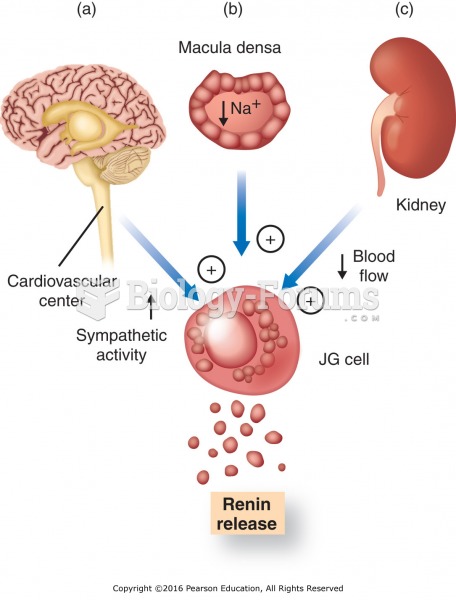Answer to Question 1
ANSWER: Our seasons are regulated by the amount of solar energy received at Earth's surface. This amount is determined primarily by the angle at which sunlight strikes the surface and by how long the Sun shines on any latitude (daylight hours).
Answer to Question 2
ANSWER: Student answers may vary somewhat, but need to contain information that the human body's perception of temperature changes with varying atmospheric conditions. The reason for these changes is related to how we exchange heat energy with our environment. The body stabilizes its temperature primarily by converting food into heat. To maintain a constant temperature, the heat produced and absorbed by the body must be equal to the heat it loses to its surroundings. There is, therefore, a constant exchange of heatespecially at the surface of the skinbetween the body and the environment.
One way the body loses heat is by emitting infrared energy. But we not only emit radiant energy, we absorb it as well. Another way the body loses and gains heat is by conduction and convection, which transfers heat to and from the body by air motions. On a cold day, a thin layer of warm air molecules forms close to the skin, protecting it from the surrounding cooler air and from the rapid transfer of heat. Thus, in cold weather, when the air is calm, the temperature we perceivecalled the sensible temperatureis often higher than a thermometer might indicate. Once the wind starts to blow, the insulating layer of warm air is swept away and heat is rapidly removed from the skin by the constant bombardment of cold air. When all other factors are the same, the faster the wind blows, the greater the heat loss and the colder we feel. How cold the wind makes us feel is usually expressed as a wind-chill index. The index takes into account the wind speed at about 1.5 m (5 ft) above the ground instead of the 10 m (33 ft) where official readings are usually taken. In addition, it translates the ability of the air to take heat away from a person's face (the air's cooling power) into a wind-chill equivalent temperature.
High winds, in below-freezing air, can remove heat from exposed skin so quickly that the skin may actually freeze and discolor. The freezing of skin, called frostbite, usually occurs on the body extremities first because they are the greatest distance from the source of body heat. In cold weather, wet skin can be a factor in how cold we feel. A cold rainy day (drizzly or even foggy) often feels colder than a dry one because water on exposed skin conducts heat away from the body better than air does. In fact, in cold, wet, and windy weather a person may actually lose body heat faster than the body can produce it. This may even occur in relatively mild weather with air temperatures as high as 10 degrees Celsius (50 degrees Fahrenheit). The rapid loss of body heat may lower the body temperature below its normal level and bring on a condition known as hypothermiathe rapid, progressive mental and physical collapse that accompanies the lowering of human body temperature.
Answer to Question 3
ANSWER: Students should be able to point out that the two most appropriate types of temperature data would be the annual range of temperature, which is the difference in average temperature between the warmest month (often July in the Northern Hemisphere) and coldest month (often January), and the mean (average) annual temperature, which represents the average of the twelve monthly average temperatures.







